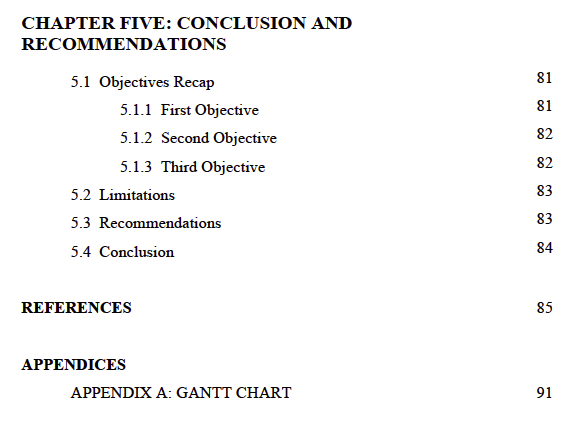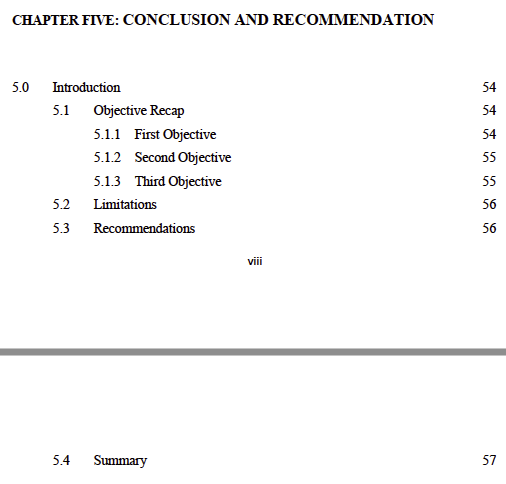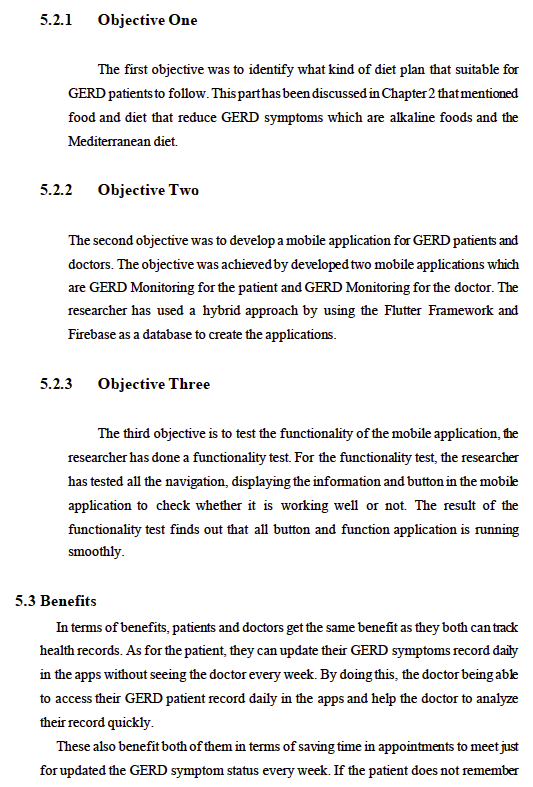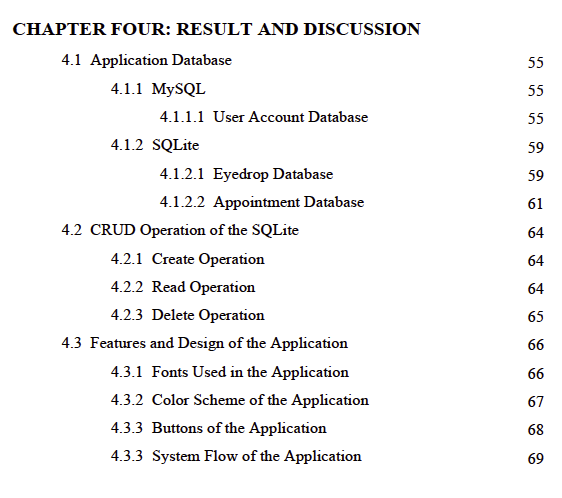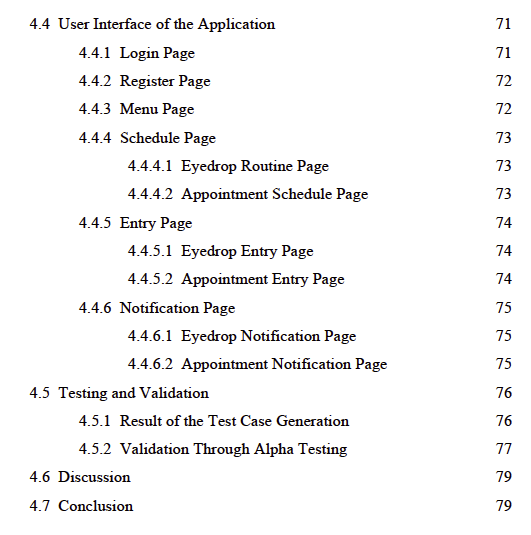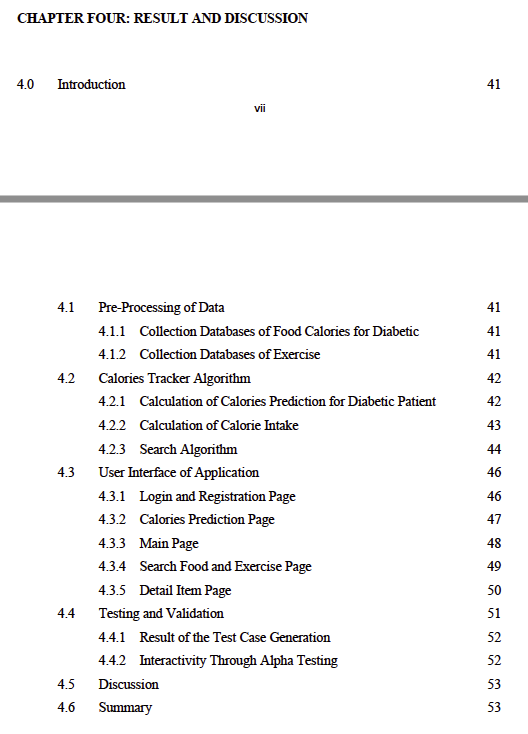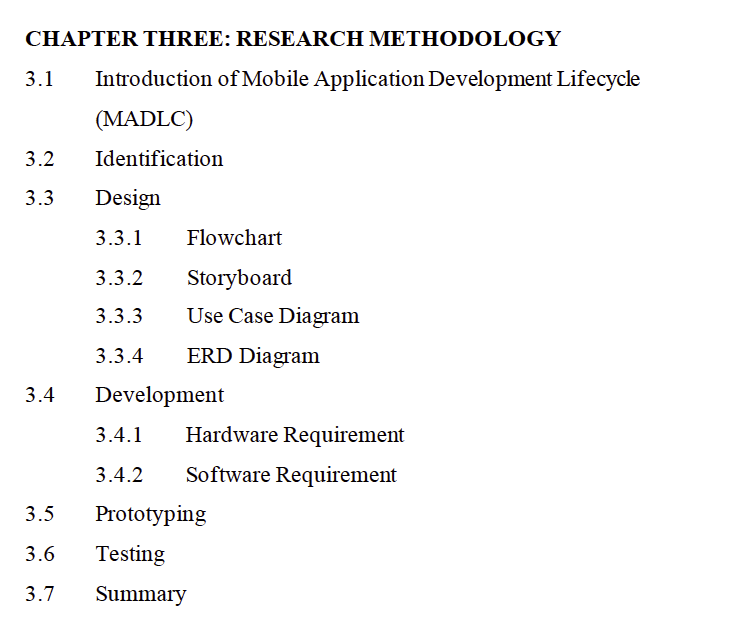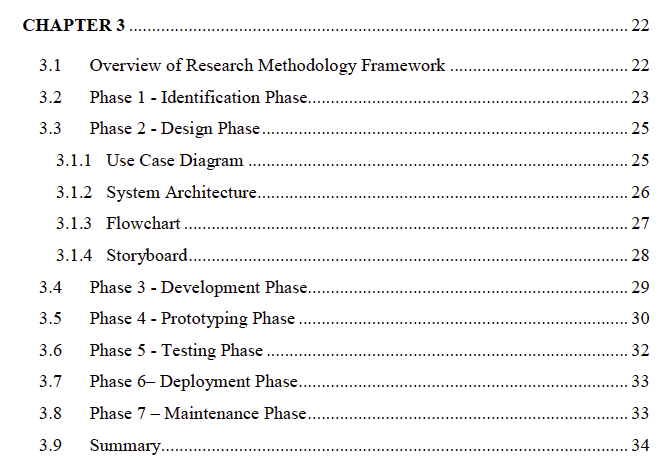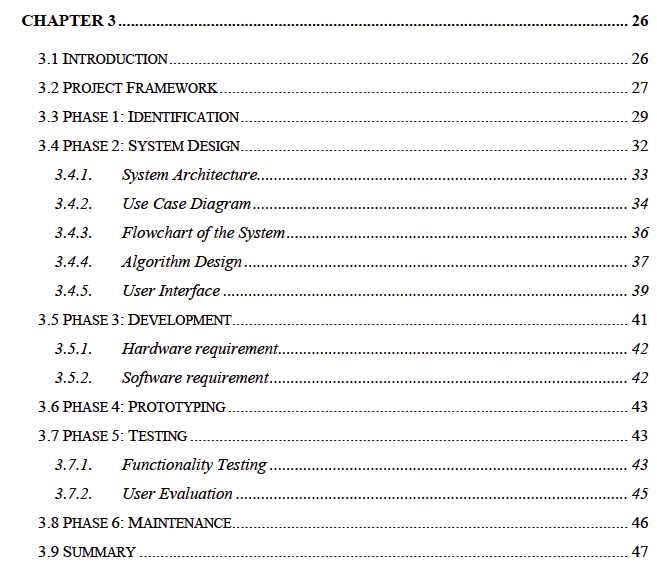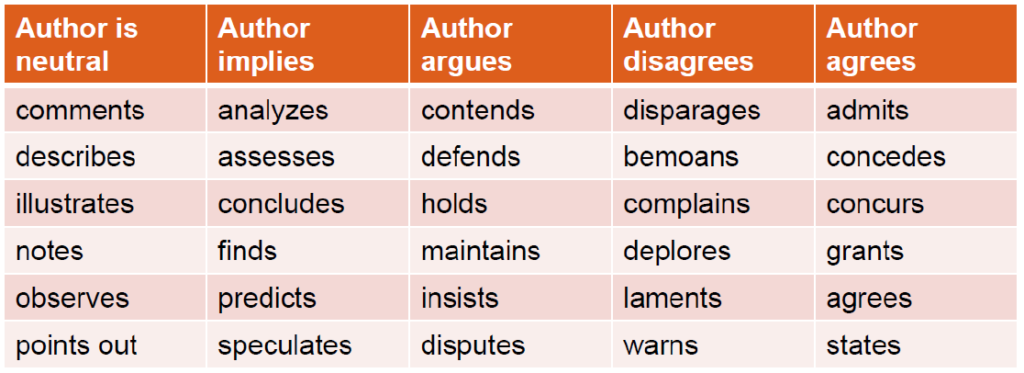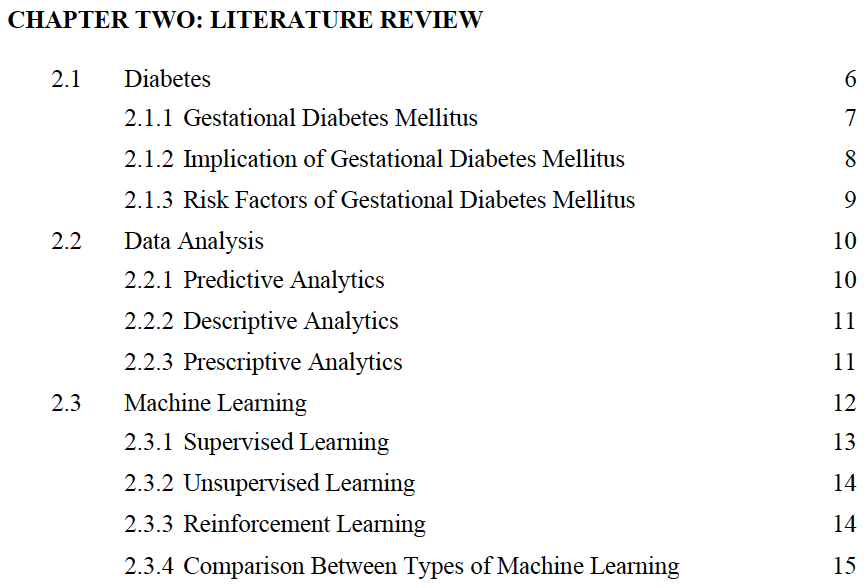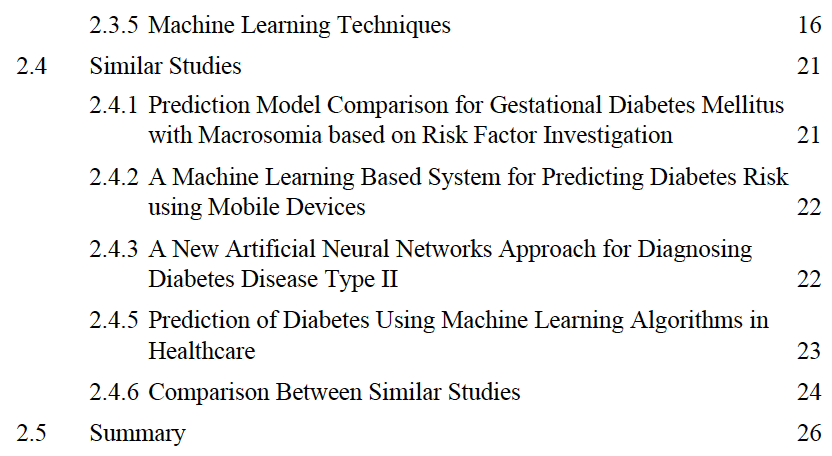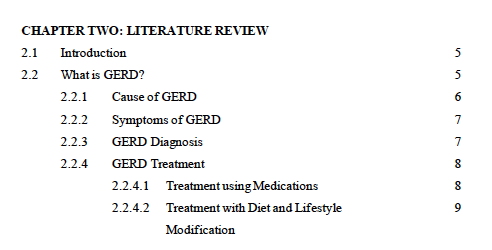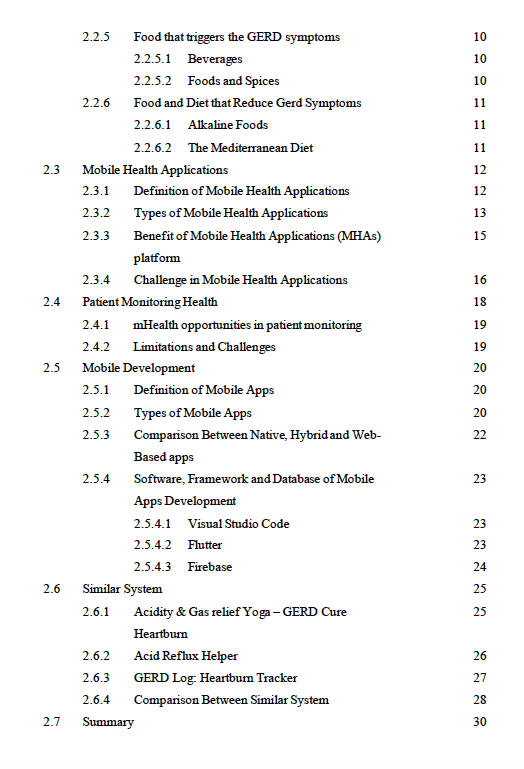In the problem statement sub-chapter, we need to highlight “what is the problem” or “what is the issue” in this project/research. Usually, an introductory sentence or paragraph precedes a problem. The example statements of the problems to show the signal of the problems are:
- At a glance, we can already see that there are difficulties at the structural level.
- Yet, there is no provision for recognising the organisational element.
- We have thus raised several issues that point out the difficulties of applying the model.
- Very little attention has been focused on this area.
- Recent work suggests that this is not exactly the case.
- Problems associated with sediments have become a major issue for years.
If you are students from computer science, you need to come out with the computer-based problem such as the problem with the technique/method/architecture of the a program/application. I will give an example, if a general problem is inaccurate diabetes mellitus prediction, so we come out what the technique that been use previously and what the problem of the technique that you can improved. The problem/limitation of the technique is the computer-based problem.
Please give at least 3 latest citations (within 5 years) to support the problem statements. More than 3 citations are better to strengthen the problem statement and it is showing that you have done good reading before come out with the problem statement.
Please don’t put your suggestion or proposed something in the problem statement, just mention or highlight the problem.
PREDICTION OF DIABETES MELLITUS DURING PREGNANCY
In order to provide excellent patient care at a minimal cost and provide easiness for the doctors, the hospital needs gestational diabetes mellitus prediction application that is safe, efficient, and accurate. In addition, the procedures should not be overly painful for the patient. (Paragraph to continue the background of study)
Currently, the hospital’s main screening tools are oral glucose tolerance tests. According to Reddi Rani and Begum (2016), screening for GDM is usually being conducted at 24-28 weeks which is around the second to the third trimester of pregnancy because during the second trimester, insulin resistance and glucose resistance increases in women who do not have the ability to produce enough insulin to adopt this resistance. (Introduction to the problem)
Performing tests too late in the third trimester limits the time in which metabolic interventions can take place. Gestational will go away after you give birth. But the baby’s health will get affected. Besides, it will increase the risk of getting type 2 diabetes later in life. Gestational diabetes occurs when your body cannot make enough insulin during your pregnancy. Gestational diabetes can lead to an increase in the risk of high blood pressure during pregnancy and also increase the risk of having a large baby where the baby needs to be delivered by caesarean section (C-section) (Michael, 2019). Screening is not effective where it sometimes will misdiagnose women with GDM, undiagnosed women with GDM will lead to both maternal and fatal complications. Such a problem should be taken seriously as the cost of screening and health-related implications connected with high sugar levels during pregnancy. Without us realising, having GDM will results in more costly outcomes because of the increase in caesarean deliveries. (Paragraph to mention the problem in details)
If the hospitals continue to do the screening at 24-28 weeks of pregnancy, it will lead to a lot of negative impacts towards an individual where these problems can actually be avoided if a more convenient screening test was available. (Paragraph to mention effect from the problem)
* This problem statement missing computer-based problem.
SYSTEMATIC EYE DROP MONITORING APPLICATION FOR CATARACT PATIENTS IN MOBILE PLATFORM
Based on the table of Age and Gender Distribution, CSR 2009-2018, from the 12th Report National Eye Database 2018, the age group that registered for cataract surgery that has the most frequencies, through the year 2009-2018 is patients that aged 65-69 years old and 70-74 years old (Aziz Salawi et al., 2018). (Paragraph to continue the background of study). At that age, forgetfulness is a part of the normal process of aging, it will take longer for a person to adapt to the new routine of their life. Different types of eye drop need to be applied several times in a day (Marilyn Haddrill, 2019), the patients might forget the eye drops routine which is essential for the recovering process. (Introduction to the problem).
After the surgery, their eyes will be vulnerable to post-op complications surgery such as infections, inflammation of the eye, and eye irritation. They will be requiring extra care and attention to make sure that their eyes heal properly without any issues. Sometimes it is possible to forget simple things such as medical appointments. According to an article in the Journal of Family Medicine and Disease Prevention entitled “Why do Patients Miss their Appointment at Primary Care Clinics”, a telephone survey was performed by calling patients who missed an appointment concerning the reasons for their missed appointment. As a result, the highest percentage reported that they forgot about the appointment scheduled by their doctor (Saif Ullah, 2018). (Paragraph to mention the problem in details)
If it happens, it will become a burden to both parties because the doctor in charge needs to reschedule the appointment and the patients will waste their money. (Paragraph to mention effect from the problem)
* This problem statement missing computer-based problem.
MOBILE APPLICATION OF WAY FINDER USING AUGMENTED REALITY NAVIGATION
To ensure accessible and affordable quality healthcare and comfort in a hospital, the hospital needs to prepare the best hospitality and services for the patients and visitors including the wayfinding to find a certain room, such as the doctors’ room and therapy room. Besides, the solutions also should be easy, and user-friendly for them to use.
Currently, due to the modernization and evolution of medical institutions in this current world, the size of the certain hospital has become huge and complex. Hence, the areas consist of many buildings, departments, medical wards, and facilities with many differences in terms of name and usage. Besides that, for people to move from one location to another location, it will take some time and will get lost easily if they did not know the exact way to go there (Fai & Audah, 2017). This has become difficult in finding exact ways to a certain department and area within the hospital vicinity (Ford et al., 2020).
An ordinary map or directory also usually will not be much help because not all people understand how the map think. The hospital map just indicates the name of the building in the hospital and does not have detailed information about a certain room (Fai & Audah, 2017). This will make newcomers or patients and visitors easily get lost (Sharin et al., 2020), and feeling disorientated as well as add to their worry and cause further stress. The more stressed people get, the less information they will be able to take in (Khan, 2019).
If the hospital does not find other alternatives for the best way of wayfinding, this will lead to bigger problems and negative impacts in the future towards an individual including discomfort around the patients, visitors, and all the medical staff.
COVID-19 ALERT APPLICATION FOR HIGH-RISK PEOPLE USING GLOBAL POSITIONING SYSTEM (GPS)
Since the epidemic began, over 3.94 million children worldwide have been infected with the Covid-19 virus, according to data from the American Academy of Pediatrics (AAP) and the Children’s Hospital Association (CHA). To ensure that children get comfortable in the hospital, the paediatrician need to prepare something interesting for the children to play around. Besides, the solutions should not be complex to overcome the pain in children and easy for them to use.
Nowadays, children are becoming afraid of Covid-19 infection. Hence, the children fear of the hospital environment or medical intervention prompted the hospitalisation to have an influence on the kid, resulting in trauma such as anxiety, bored and sobbing (Morgul et al., 2020). Besides, isolated children seek to meet friends, lack of physical contact with family members at home and feel disappointment if they do not meet friends (Fleming & O’hara, 2020). This extended isolation period prevented children from attending school and interacting with their friends, resulting in counter-emotions displayed by children in the face of boredom and even loneliness (Idoiaga et al., 2020).
An ordinary book usually does not be much help because not all of the children are able to read at the young age but some of them are able to do so. The book only shows the words and does not have any multimedia elements. This will make those who are unable to read harder for them to understand what they are reading or looking and frequently associated with boredom as well as tiredness (Chin et al., 2017).
If the paediatrician does not find any alternative way to overcome the children’s fear and boredom, it might impact hospitalization which causes trauma to the children.
* This problem statement missing computer-based problem.
INTERACTIVE TAJWID MEMORIZATION MIND MAP GAME
In recent years, students preparing for Tajwid exams, such as PSRA, have encountered difficulties with traditional memorization techniques, especially for complex subjects like Tajwid rules. Memorization challenges, particularly among young students, often stem from the inability of rote learning methods to cater to diverse learning styles (Adam, 2016; Shahrudin et al., 2015). These traditional methods lack interaction and visual aids, which are proven to enhance retention and comprehension; hence, they frustrate the children and lessen their motivation because more active learning methods are called for (Hajar et al., 2024).
Previous studies also point toward the disadvantages of rote memorization, which generally tends to be less effective for cognitively needed children in subjects with many rules, like Tajwid. Because it lacks a systematic method to reinforce learning through interaction and repetition, this strategy falls short in meeting the retention needs of kids with attention-related disorders like ADHD or general memory problems (Shukri et al., 2020). Such limitations hinder their ability to consistently apply Tajwid rules in Quranic recitation, which is essential for their exam preparation (Yusof et al., 2012).
The first area taken from the literature is the need for digital solutions that employ interactive learning tools to provide more support for students’ comprehension and memory. Similar studies in Malaysia have found that technology-enhanced learning tools address gaps in cognition by making learning adaptable and engaging for students who are having trouble memorizing everything, especially with religious studies (Shukri et al., 2020).
In summary, the basic problems that this research faces are the problems that traditional memorization methods of Tajwid offer, the need for more interactive and engaging educational tools to improve retention in students with general memorization difficulties and ADHD, and the existing gap in digital solutions catering to diverse student needs in Islamic education.
GAMIFIED LEARNING FOR FOUNDATIONAL LITERACY AND NUMERACY: A GAME FOR MALAYSIAN CHILDREN AGED 7
In Malaysia, a significant number of primary school students struggle with basic literacy and numeracy skills, with approximately 122,000 Year 1 students unable to effectively engage with the foundational competencies known as the 3Ms: Writing, Reading, and Counting. This gap reveals a pressing need in early education and raises questions about the effectiveness of current teaching methods for building foundational learning (Kosmo!, 2024).
Research shows that traditional instructional approaches often lack the engaging qualities necessary to captivate young learners, resulting in poor retention of essential skills. Without timely intervention, these students risk long-term academic setbacks, which may affect their educational progress and self-confidence. Many experts highlight the need for innovative educational tools, as existing resources often fall short of reinforcing these fundamental skills (Hui & Mahmud, 2023). Furthermore, there is one study shows that the use of educational games in teaching mathematics leads to notable improvements, even among the weakest students, and fosters positive perceptions of learning through play (Hanani et al, (2024)).
In conclusion this project is focusing on addressing the difficulties faced by year 1 students in mastering literacy and numeracy the limitations of traditional teaching methods, and the most important need for interactive, game-based learning tools to enhance learning outcomes.
CORROSION CLASSIFICATION ON LAND IN THE OIL AND GAS INDUSTRY USING TRANSFER LEARNING
For many years now, the oil and gas sector has relied heavily on traditional corrosion monitoring technologies such as corrosion coupons, electrical resistance probes and ultrasonic examinations (Ying Xiao, 2024). While these techniques have helped to achieve their primary goal of identifying corrosion, they frequently fall short of delivering the precision and speed required for effective corrosion treatment. These technologies frequently generate delayed or incomplete data by making it difficult to deploy proactive corrosion control solutions, particularly in complex operational situations (Ali Hussein Khalaf, 2024).
The limitations of traditional corrosion classification methods contribute to increased operational costs (Ning Xu, 2024). In increasingly complex downhole environments and evolving transportation and production technologies, oil and gas facilities face rising incidents of damage. It is often due to undetected corrosion. The inability to promptly address localized corrosion such as pitting, can result in costly repairs, equipment failures and even production shutdowns. Significantly impacting the financial and operational efficiency of these facilities (M.H.Sliem, 2021).
As corrosion challenges become more complex, the need for advanced monitoring technologies has grown. Corrosion incidents related to localized forms such as pitting. Now account for over 80% of cases by making it clear that more precise and real-time monitoring systems are essential (E.M. Fayyad, 2021). Recent advancements in artificial intelligence (AI) show great promise in revolutionizing corrosion classification and prediction (A.M Abdullah, 2021). By integrating AI into corrosion monitoring technologies, the industry can benefit from a proactive model by allowing operators to predict and mitigate corrosion before it leads to equipment failure and ensuring the long-term integrity of oil and gas assets.
ARTICLE: “Research Methods and Strategies: Problem Statement Development: How to Write a Problem Statement in A Dissertation”

